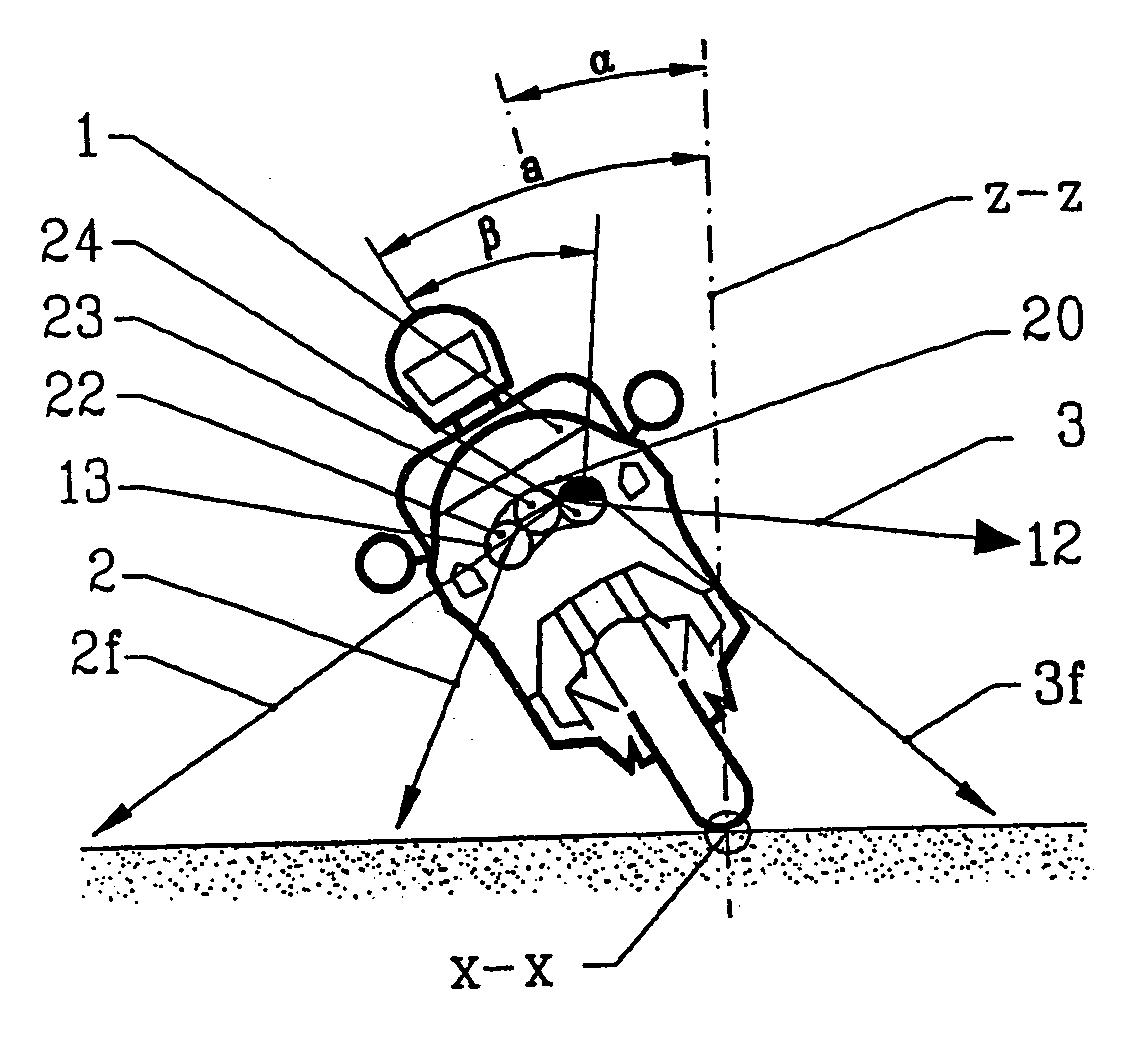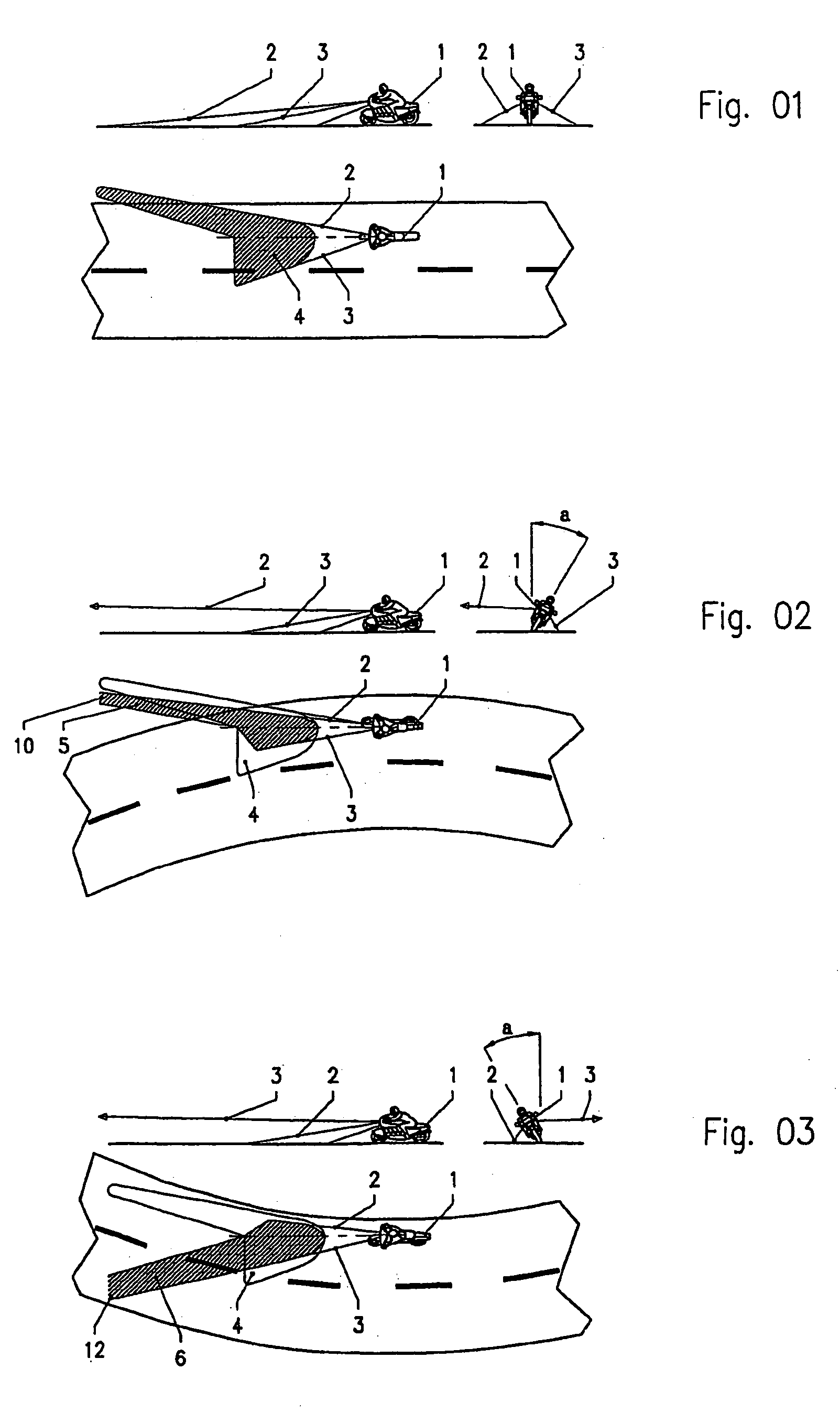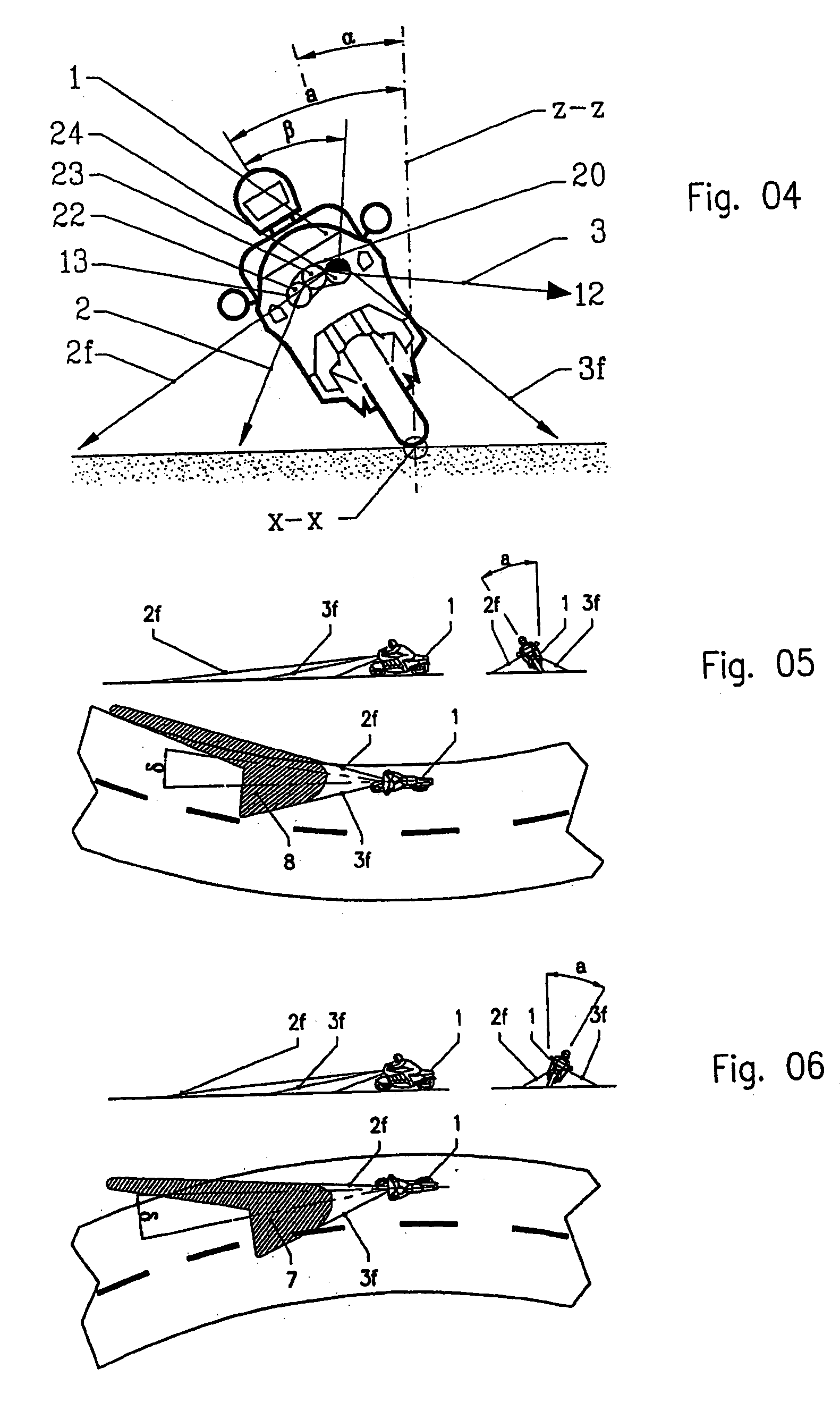Headlight unit for single-track two-wheeled vehicles
a two-wheeled vehicle and headlight technology, applied in the direction of lighting and heating equipment, transportation and packaging, lighting heating/cooling arrangements, etc., can solve the problems of blindness of oncoming traffic, inability to adequately illuminate the respective inside of the curve, and greatly reduced the visibility distance of drivers in the curve, so as to reduce the system cost, improve illumination, and high operating safety
- Summary
- Abstract
- Description
- Claims
- Application Information
AI Technical Summary
Benefits of technology
Problems solved by technology
Method used
Image
Examples
Embodiment Construction
[0034]FIG. 1 shows a light-beam pattern in the form required by traffic regulations, for the case of a dipped beam, adapted for traffic driving on the right, of a motorcycle 1 provided with a commercially available headlight, wherein the illuminated area 4 during straight-ahead driving is defined by a left and a right boundary beam 3 and 2 respectively, extending in driving direction.
[0035]FIG. 2 shows motorcycle 1 in a left-hand curve. Because of its inclination by angle a on the curve, the resulting illuminated area 5 is smaller than that in FIG. 1. A fraction of area 4 on the inside of the curve is no longer illuminated. Right boundary beam 2 no longer reaches the ground and thus becomes blinding beam 10. For the driver of motorcycle 1 equipped with a standard headlight, therefore, the asymmetric branch of the dipped beam no longer contributes to improvement of the view of the road along the right boundary of the driving lane.
[0036]FIG. 3 shows motorcycle 1 during negotiation o...
PUM
 Login to View More
Login to View More Abstract
Description
Claims
Application Information
 Login to View More
Login to View More - R&D
- Intellectual Property
- Life Sciences
- Materials
- Tech Scout
- Unparalleled Data Quality
- Higher Quality Content
- 60% Fewer Hallucinations
Browse by: Latest US Patents, China's latest patents, Technical Efficacy Thesaurus, Application Domain, Technology Topic, Popular Technical Reports.
© 2025 PatSnap. All rights reserved.Legal|Privacy policy|Modern Slavery Act Transparency Statement|Sitemap|About US| Contact US: help@patsnap.com



